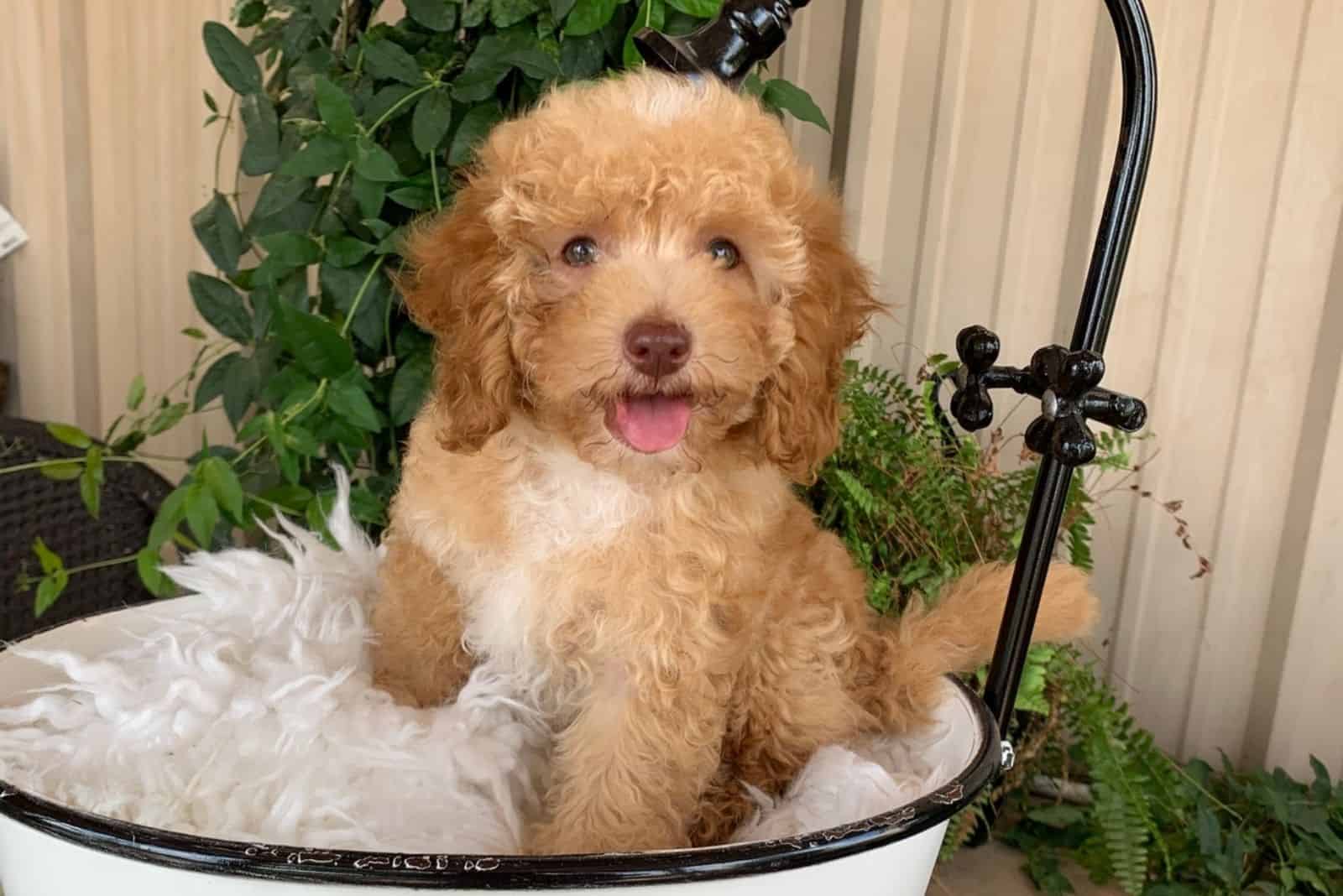The most popular Doodles of them all, the Labradoodles, have come to steal the show!
These adorable-looking angels come in various shapes, sizes, and looks. It’s hard to determine which one is the cutest. A good chance of winning that contest has our pup of the day, the micro Labradoodle.
How big are micro Labradoodles? What are they like? Are they as sweet as standard Labradoodles?
These, and many more questions, are waiting to be revealed today.
Yours is to ask yourself: does a micro Labradoodle have at least a micro chance of becoming your pet?
How It All Began: The Story Of Labradoodles
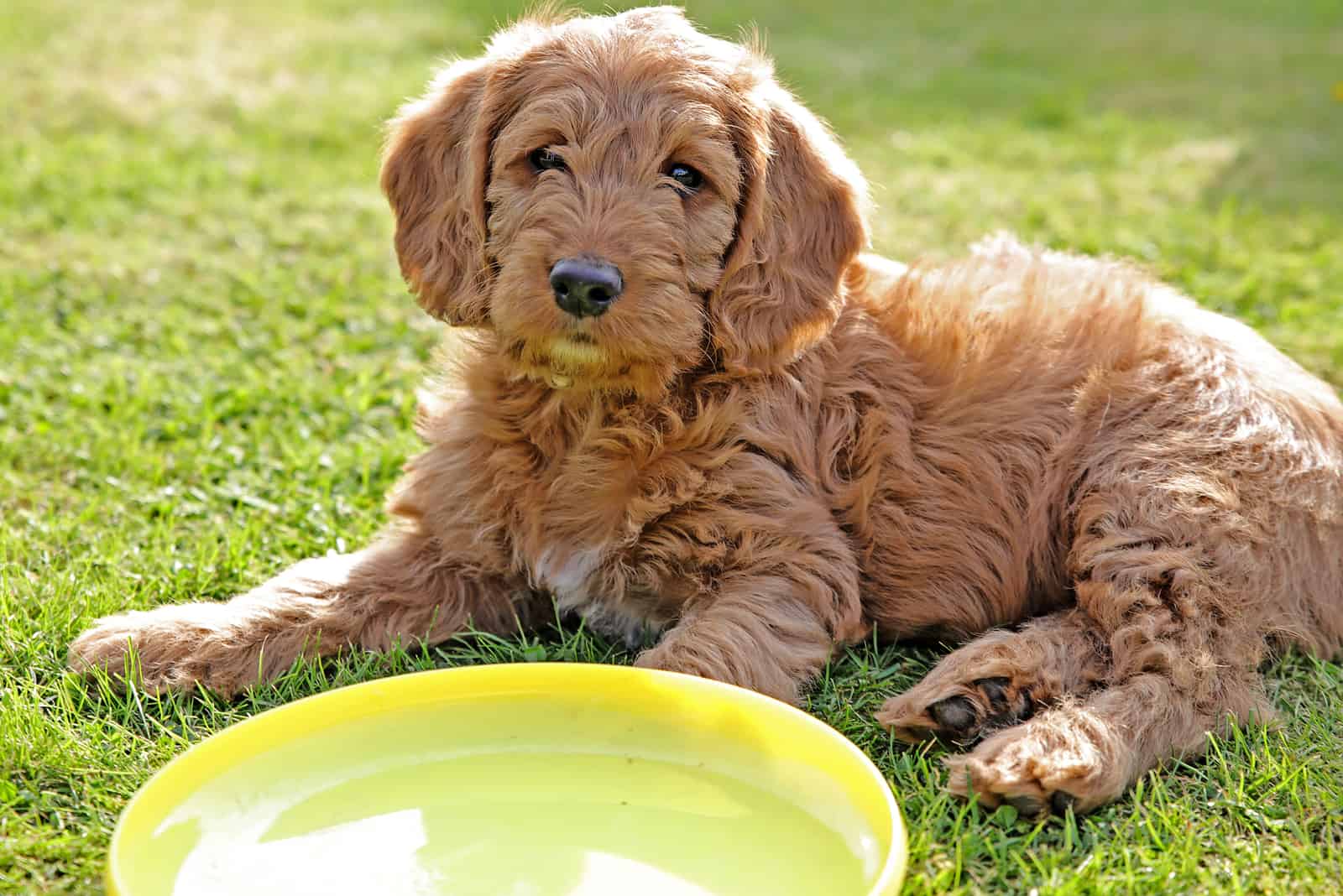
The Labradoodle is a dog breed originally created in Australia for the purpose of being a hypoallergenic guide dog.
Back in 1989, a breeding program by Wally Conron brought together two purebred dog breeds – the Standard Poodle and Labrador Retriever.
Love happened at first sight, and a puppy named Sultan was born. Sultan, and his many brothers and sisters, not only had allergy-friendly coats, but they also had the intelligence, personality, and natural ability of a great guide dog.
Sultan went to live with a woman in Hawaii as a therapy dog and was very successful at his work. It was then when the other dog breeders saw the possibilities they could have for breeding a Labradoodle.
It didn’t take much time for the Labradoodle to become one of the most desirable Doodles of them all.
Generally, the Labradoodle is produced by mixing a Poodle and a Labrador Retriever; however, multigen breeding is becoming more frequent in order to create a feasible and recognized breed.
In the next few years, this crossbreed should achieve the registered breed status.
The Australian Labradoodle Association and the International Labradoodle Association are both working hard on bringing Labradoodle breeders together and achieving the same standards through multigen breeding.
Unlike many mixed breeds, the Labradoodle will finally be worthy of official recognition.
Behind The Scenes: The Labradoodle’s Personality
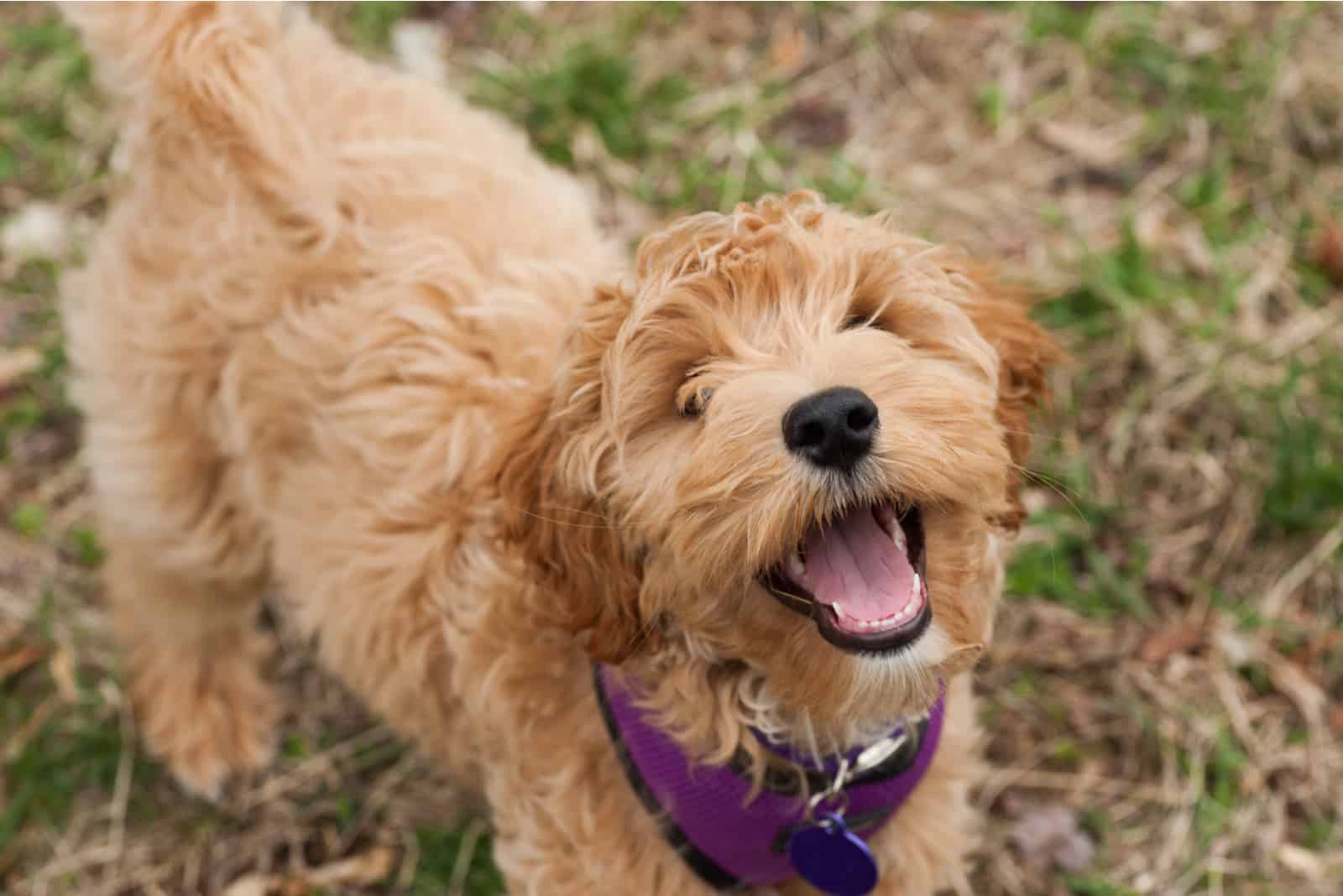
Train them properly and you’ll have an ideal family pet.
Labradoodles are a highly intelligent dog breed. Generally, they appear to be super friendly and open to meet new people and treat everyone as their friends.
Yet, still, they know their family members and would give the last doggy treat in the bag for any one of them.
Since they come from a Labrador Retriever, one of the most gentle breeds in the canine world, the Labradoodle is also gentle.
These are easygoing pups not to be aggressive, ever! Yes, some can be a bit aloof and unfriendly, but never aggressive as some other breeds.
The Labradoodles express their happy temperament in joyful actions, such as jumping all over the place, running zoomies, and playing. All in all, they’re a delight to work with, and an endless source of joy to live with.
Like other Labradoodles, our micro Labradoodle has a friendly temperament affected by various factors. Some of them are heredity, socialization, and training.
Labradoodle puppies generally have a nice temperament, which expresses their curiousness and playfulness.
They will approach anybody to play and get some belly rubs!
Temperament is a major concern you need to have in mind while picking up a Labradoodle puppy. Always choose the one that’s in the golden middle: not too shy to hide away and not too feisty to attack the other pups in the litter.
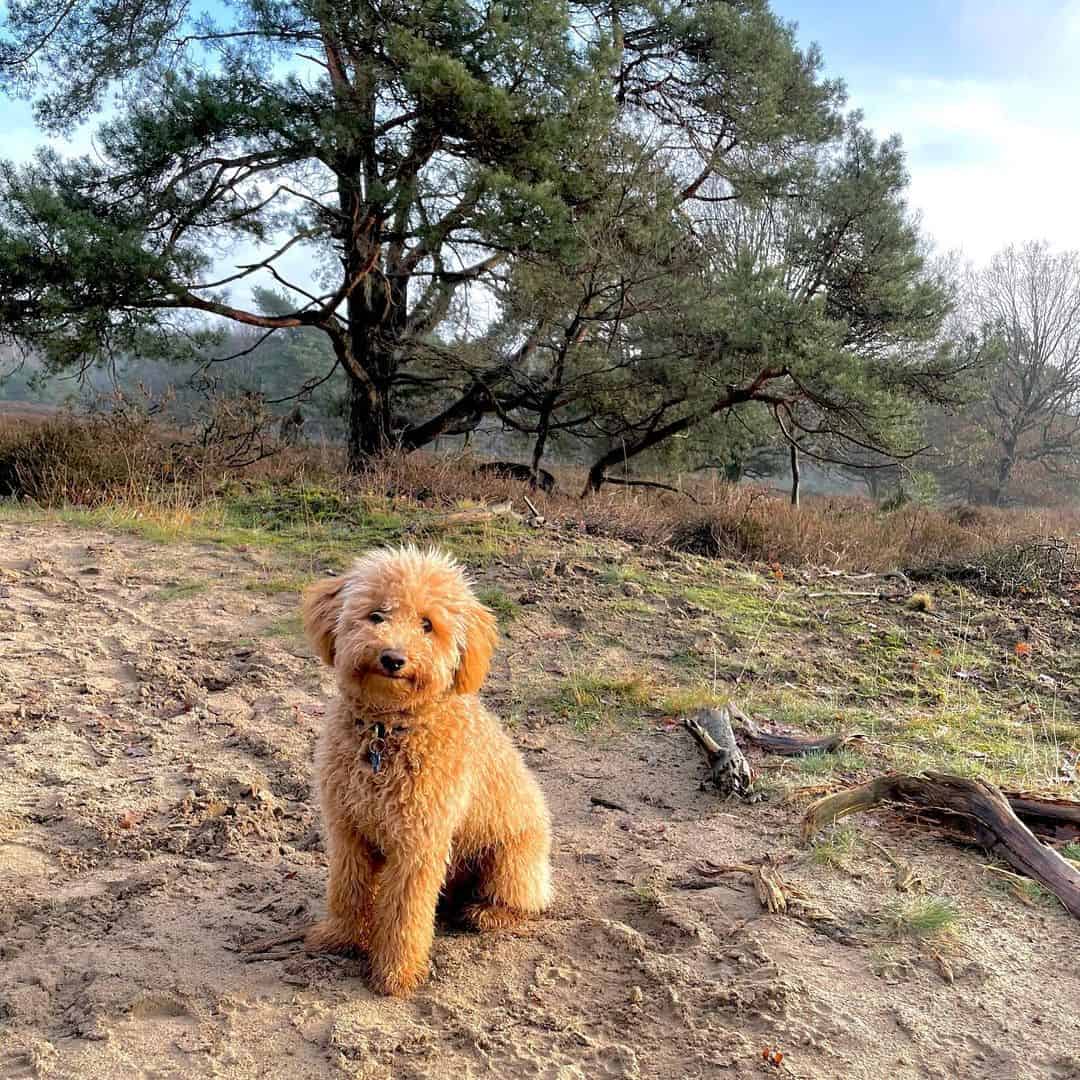
Photo from:@guus_scheffer
It would be best to meet the pup before you take it home. You never know if your temperaments match. If you’re shy yourself, then maybe the joyful and energetic puppy won’t be a match for you.
As much as any other dog, the micro mini Labradoodle needs socialization starting at an early point.
Socialization means exposing dogs to different situations, people, animals, sounds, sights, and experiences while they’re still a puppy. This will ensure a well-rounded pup in the future.
What you can do to maximize the socialization volume is to enroll your pupster in a kindergarten class. Also, having friends over, visiting dog parks, and having playdates with other dogs will help to tune their social skills.
Health: Are Labradoodles Healthy Dogs?
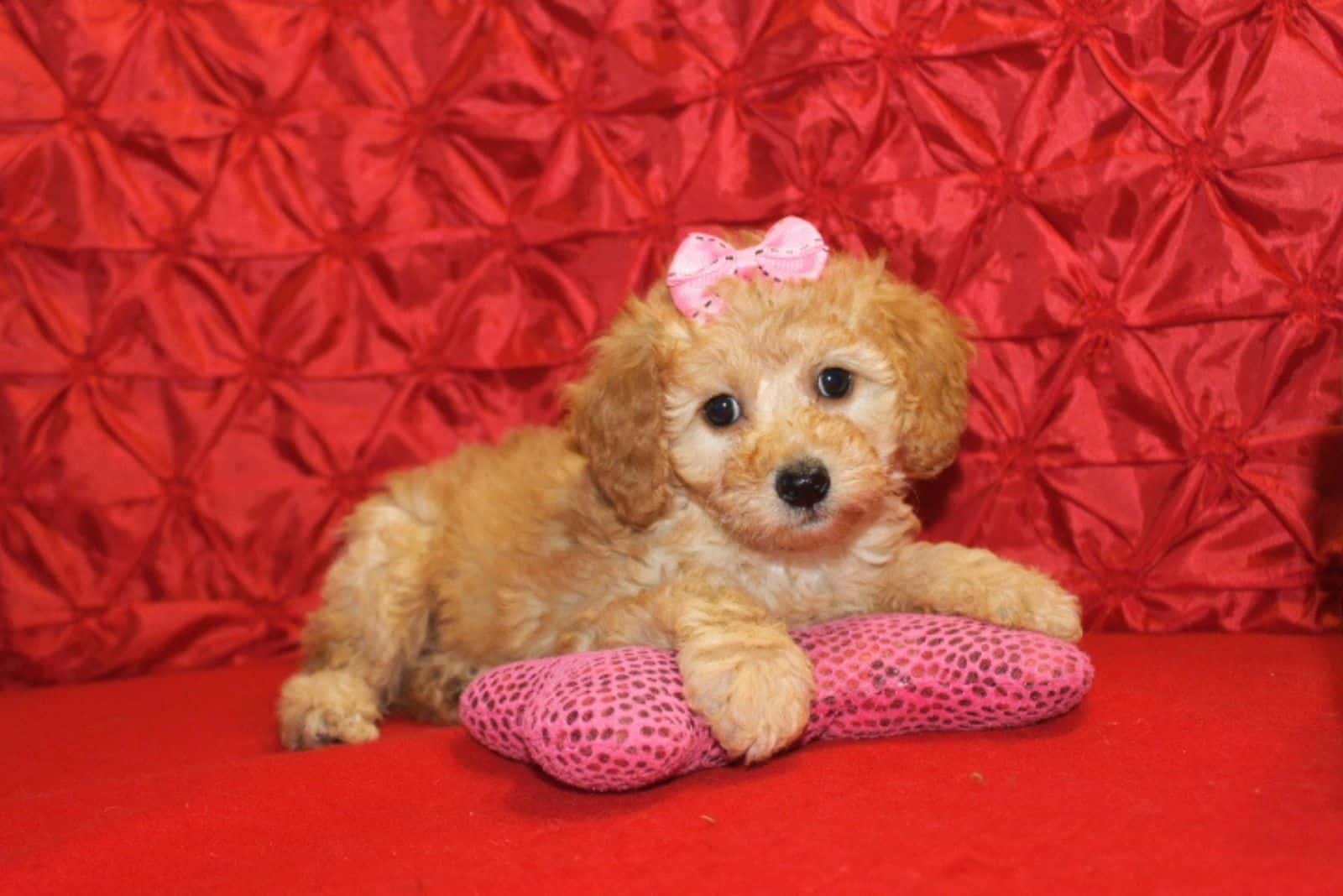
Labradoodles are generally healthy, but that, too, isn’t written in stone. Like many other breeds, they also have some health problems.
Even different Labradoodle generations, like F1, F1b, or F2 Labradoodles, have differences between health issues.
Not all dogs will suffer from the following diseases, but it’s important to know them before getting a micro Labradoodle for yourself:
• ear Infections
• hip dysplasia
• hypothyroidism
• epilepsy
• allergies
• progressive retinal atrophy
Ear infections happen because of their floppy ears that retain moisture. Therefore, they should be checked and cleaned regularly.
Hip dysplasia is a condition these Doodles inherit, meaning the thighbone doesn’t fit into the hip joint anymore.
The result is a dog in pain and lameness on one or both hind legs. An X-ray is the most efficient test to discover this problem.
Elbow dysplasia is very similar to hip dysplasia. This is also an inherited condition believed to be caused by abnormal growth and development, which often results in a weakened joint. However, elbow dysplasia doesn’t have to be so severe.
This condition can range from arthritis to severe cases of lameness. Treatment is difficult, and requires surgery, medical management, weight management, and anti-inflammatory meds.
Hypothyroidism is a condition that affects the thyroid gland. It can be responsible for conditions like epilepsy, alopecia, lethargy, hyperpigmentation, proderma, etc. It’s treated with meds and diet.
Epilepsy is a neurological condition that can be inherited. Epilepsy causes mild to severe seizures that may cause some behavioral patterns like frantically running, staggering, hiding, falling down, losing consciousness, etc.
Seizures are very difficult to watch, but the long-term prognosis for dogs with idiopathic epilepsy is usually good. It’s important to take your dog to the vet for regular checkups and a proper diagnosis.
Allergies are something that is most common in the dog world, and it doesn’t leave your micro mini Labradoodle out. The three main kinds of allergies are food, contact, and inhalant allergies.
The treatment varies depending on the type of allergy, but it usually requires some dietary restrictions, meds, and a change of environment.
Diabetes Mellitus is a serious condition in which the body can’t regulate blood sugar levels. A dog suffering from this health issue will eat more in order to compensate for the sugar not getting into the cells to burn out energy.
These dogs usually lose weight because food is not being used the way it is supposed to. To spot diabetes in your micro Labradoodle pup, look out for the following symptoms:
• excessive urination
• thirst
• big appetite
• weight loss
Micro Doodles with diabetes can still lead a normal life if the diet is controlled and they manage the insulin.
Progressive Retinal Atrophy (PRA) is a family of eye conditions that involve gradual deterioration of the retina. Early cases show night blindness in some dogs.
As the condition progresses, blindness occurs during the day, too. Many dogs can still live a normal life despite their loss of sight.
Micro Labradoodle Coats And Grooming

In general, Labradoodles have a range of coat types, but the usual length is four to six inches.
Since this is a mix of a miniature Poodle, Labradoodles have only one coat with straight to wavy or slightly curly hair. Thankfully, this designer dog inherited coat traits from the Poodle parent, not the Labrador Retriever.
The curls aren’t supposed to be tight or the coat won’t be soft and fluffy.
There are three types of texture:
• the hair coat
• the wool coat
• the fleece coat
The hair coat is similar to what the fur-shedding breeds have. This is the least popular option since it sheds. Such a coat can be found in first-gen pups, even though the breeders tend to avoid it.
The wool coat is dense and resembles lamb’s wool. The curls are loose and not so dense. This coat doesn’t usually have doggy odor, and it shows to be non-shedding.
The Fleece coat has a silky texture, much like the Angora goat texture. It can be straight or wavy.
Micro Labradoodles have non-shedding to low-shedding coats, especially those that have fleece or wool coats.
This designer dog comes in a variety of colors. The micro Lab Doodle can be gold, apricot, chalky white, caramel, red, black, cafe, silver, cream, parchment, chocolate, or blue.
Wow, such a wide range of colors! In addition, they’re also particolored options as well as brindle, phantom, patched, merle, or sable.
Grooming requirements vary depending on the coat length and type. Usually, brushing a micro Labradoodle should be done once or twice a week.
Clipping takes place every six to eight weeks. Keep a steady grooming schedule and your dog will have a soft and silky coat.
Much like one of the parent breeds, the Labrador, micro Labradoodles are prone to ear infections, so keeping the ears clean and tidy is an extra task you have to do. Check for dirt, bad odor, or any redness every week to prevent ear infections.
Brushing teeth is supposed to be done at least two or three times a week to prevent tartar buildup and bacterial infections. For better results, and to prevent gum disease and bad breath, daily brushing is suggested.
Nails are another part of your micro Labradoodle that need regular grooming. Once or twice a month is perfectly fine unless the dog doesn’t wear them off the natural way.
If you still hear clicking on the floor, then the nails are too long, and long toenails are painful!
Be very careful when trimming the nails since they do have blood vessels inside. If you cut them too short, you could cause bleeding. Ask a professional to do it for you in case you’re too afraid to hurt your pup.
Grooming doesn’t only mean keeping the dog clean and tidy. It’s also a way of bonding with your mini Labradoodle puppy and building a strong foundation for a healthy adult Doodle.
Taking Care Of Your Micro Labradoodle
Labradoodles are generally easy to adapt to anywhere, but real-life situations can sometimes be a bit different.
Bigger Labradoodles can have trouble fitting in small apartments, unlike the toy Labradoodle or our micro mini Doodle. That’s why smaller types of Labradoodles should be your first choice if you live in a small place.
Since this dog requires daily exercise of 30 to 60 minutes, taking them for a run would benefit you both.
Labradoodles are excellent jogging companions. Still, these aren’t jocks among the pups, so they also need mental stimulation. They are smart and quite energetic, so when they feel bored, they might act destructively.
Feeding the dog proper dog food matters more than you think. Dogs don’t eat human food, God forbid spicy food like jalapenos or paprika! While some fruits and vegetables like jicama, cilantro, and guava may be safe to eat, foods like poppy seeds or salsa shouldn’t be consumed by dogs. A proper diet ensures a healthy and shiny coat.
Coming from two dogs that are calm and intelligent, the Labradoodle is proven to be very smart in training and eager to please. As long as the training is supported with positive reinforcement, success will be guaranteed.
In addition, early socialization is important if you want a well-behaved puppy. Who doesn’t?
Even though they’re being used as service dogs in therapy, our pups of the day are an excellent addition to every family in any situation and environment.
Indeed, they’re truly companion dogs who need constant human contact, so keeping them outside the house might not be a good idea.
Size Variations: The Types Of Labradoodles
A Labradoodle comes in three size variations.
How big your Doodle will get depends on the size of the Poodle parent used in the breeding process back in the first-generational breeding.
Some Labradoodle breeders have found a connection between the size of the puppy and the size of the parent. If the male is slightly bigger, the pups will be, too!
Here are the three Labradoodle sizes, listed from the biggest to the smallest one:
• The Standard Labradoodle (around 22 to 24 inches in height for a male and 21 to 23 inches in height for a female; both can vary in weight from 50 to 65 pounds)
• The Medium Labradoodle (around 18 to 20 inches high for a male and 17 to 19 inches high for a female; both weighing from 30 to 45 pounds)
• The Miniature Labradoodle (varying around 14 to 16 inches and 25 to 35 pounds)
These are the usual, breed standard Labradoodle sizes. Still, it’s no surprise for a Labradoodle to be slightly bigger or smaller than usual.
If you have a reliable breeder who claims your micro mini is and will stay a micro, but the dog appears a bit larger, then remember what we said.
Also, you can find Mini Australian Labradoodles, but this is a whole different story.
The Size Does Matter: How Big Are Micro Labradoodles
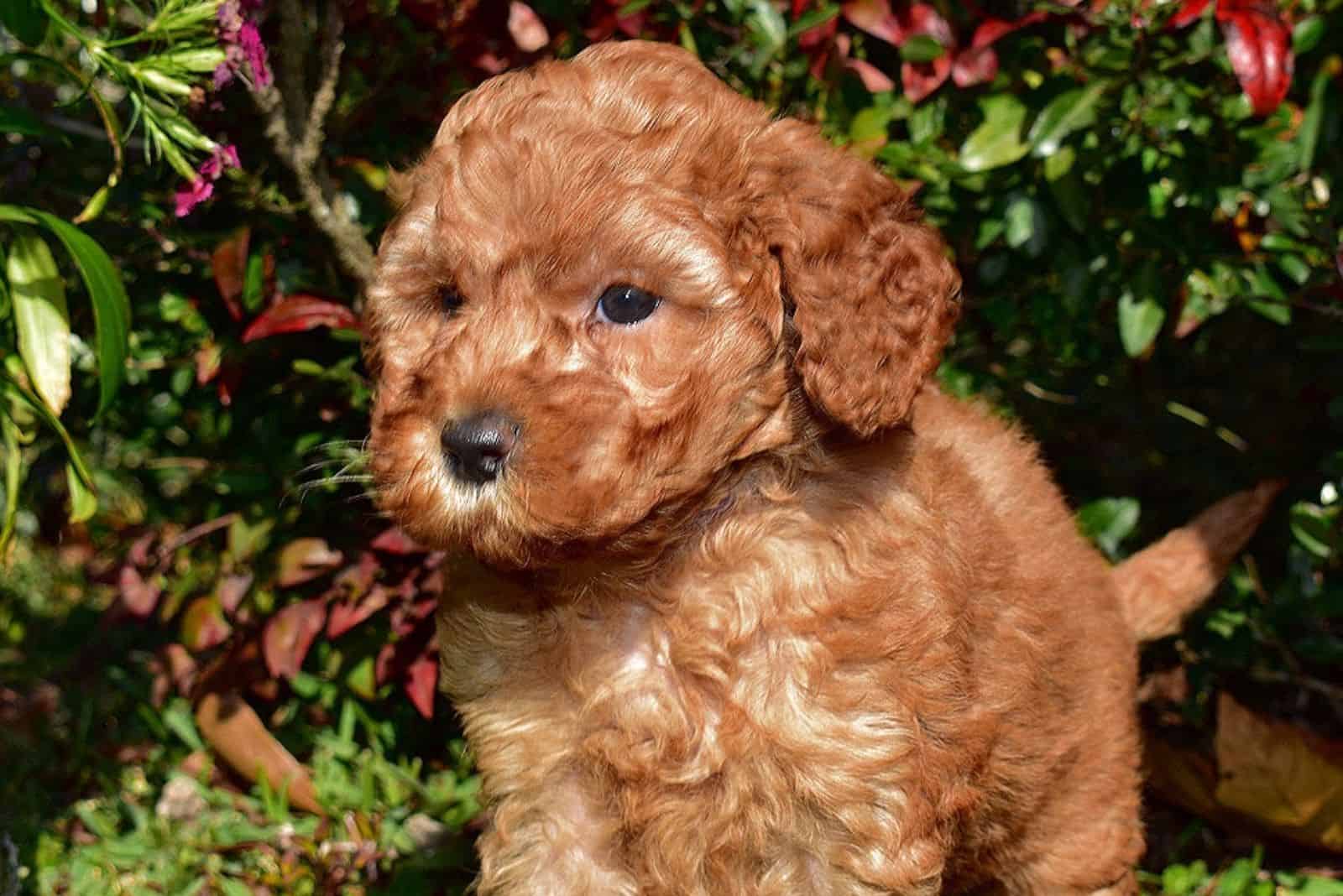
Actually, the question here could be: How small are micro Labradoodles?
These dogs are as small as they get! Micro minis are a compact cross ready for action anytime. This is a dog you can carry in your bag and take with you to the office, shopping, or for a drive. They’re much easier to handle than the other Doodles.
The only problem with such small pups, especially those coming from the toy Poodle, is their temperament.
It’s much different from other, larger breeds, but in a negative connotation. An improvement is visible in multigen dogs because they have managed to keep the great personality of a Standard Labradoodle and the small size of a Poodle.
Should A Micro Labradoodle Be My Pet?
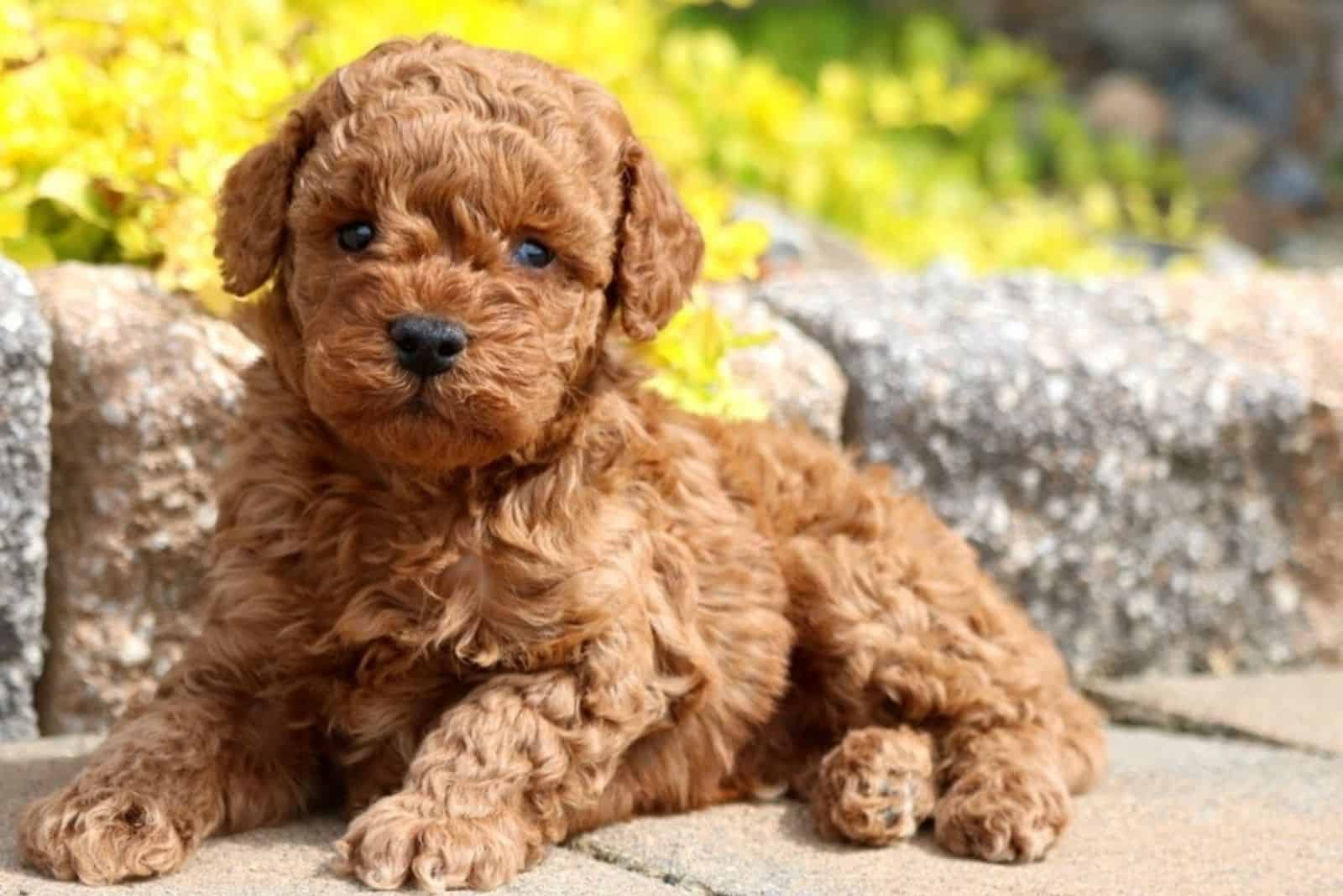
The answer is always yes if you have time to devote to your new dog and space for it to grow undisturbed.
Luckily, micro Labradoodles handle tiny apartments and small yards quite well; hence, their micro size. You couldn’t fit a bigger dog in these areas even if you wanted to.
This miniature Labradoodle doesn’t require extensive exercise to stay fit and healthy, unlike his bigger cousins.
However, they are still energetic dogs that need daily workout sessions. Otherwise, you’re risking boredom, and boredom leads to aggressive behavior and other problematic behavioral patterns.
All Labradoodles are well-behaved and obedient pets, that is, if you train them well and give them plenty of exercise.
Micro Lab Doodles are just that and even more. They’re the most convenient choice for those dog lovers who simply have no time or energy for a bigger pooch.
Picking Out The Right Labradoodle
Labradoodles are truly magnificent dogs and the perfect addition to any family. However, that doesn’t mean they’re the best fit for you.
Before you get a dog, it’s crucial to know whether you can or can not tick every living condition off of the list.
The great news is the micro Labradoodle, of all the other Labradoodles, requires less space. Do you have a place in the city with no garden?
No problem! Do you live on a spacious farm with lots of other animals? Brilliant! The micro Labradoodle is the ideal any-scenario pup.
All Labradoodles are terrific dogs. It’s up to you to choose which size you want: micro, mini, medium, or standard Labradoodle.
At The End Of The Day…
Size does matter, but only if you’re limited with space.
Tiny apartments require tiny dogs, like our micro Labradoodle.
Big houses need a warm heart resting by the fireplace, like our micro Labradoodle.
An any-case scenario needs a micro Labradoodle.
Are you sure you don’t need, like, a dozen of them?

